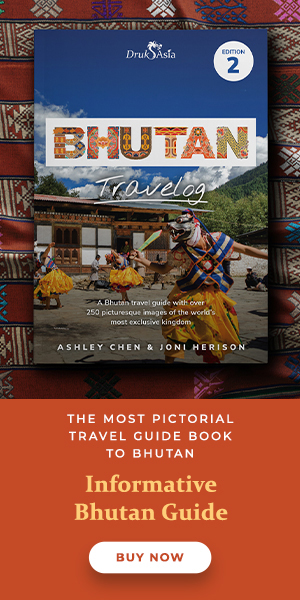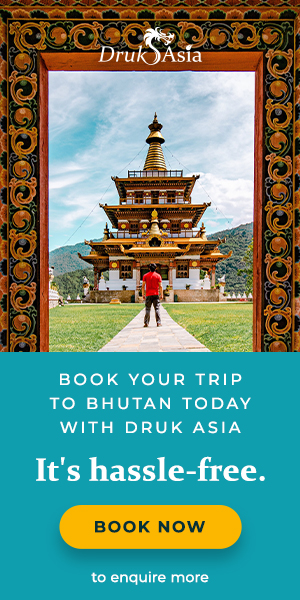Tshoglhams – Reviving The Art Of Making Bhutan's Traditional Boots
Lopen Tenzin Wangdi was the last and only person who knew how to make these fascinating boots.
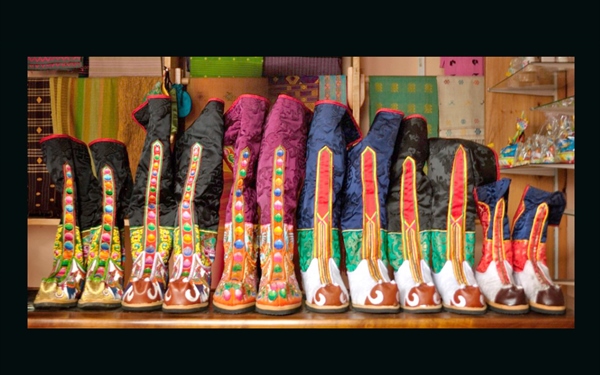 (Source: Wordpress/Yangcheey97)
(Source: Wordpress/Yangcheey97)
By Zann Huizhen Huang | Daily Bhutan
The culture of a country can be manifested in many ways, from its art forms to its cuisine, and even from its costumes to its shoes.
While many traditional footwear such as the lotus shoes from China or kabkab shoes from the Ottoman empire are no longer in vogue or in use, the ‘tshoglham’ of Bhutan has survived the onslaught of modernism till this day.
Richly embellished with intricate embroidery, tshoglhams are the traditional footwear of Bhutan. These knee-length boots with upturned toes usually consist of three parts that are made individually and then sewn together.
The lower part is usually white and made of leather appliqué; the middle part is made of brocade with richly embroidered images such as dragons, phoenixes or flowers (the colour of this part designates the class and occupation of the owner), while the upper part is long and made of silk brocade or woollen material with patterns sewn on the fabric.
These gorgeous boots were originally made of ‘gechen’ or silk cloth, but by the 20th century, they were more often made in combination with leather.
Source: Youtube/Sir Chogyal
While they are not worn in daily life by most Bhutanese, it is mandatory to don these beauties during certain ceremonies and on special occasions such as weddings.
For instance, during the first tshogdu (national assembly) in 1953, the members of the assembly had to wear tshoglhams.
His Majesty the King Jigme Khesar Namgyel Wangchuck wore them during his coronation in 2008, although (ironically) the boots were designed by Salvatore Ferragamo.
Symbolism of the boots’ colours
For centuries, the Himalayan kingdom of Bhutan has a tradition of making these special boots by using different colours to denote the rank and status of the wearer.
Similar to Chinese tradition, the lower shafts of the boots, if dyed yellow, are meant for the King or Chief Abbot. Senior officials would wear red and ministers would wear orange, while green was reserved for commoners.
Not only meant for men, there are also tshoglhams tailor made for women. Instead of the longer version for men, women’s boots are of shorter length, reaching just above the ankle.
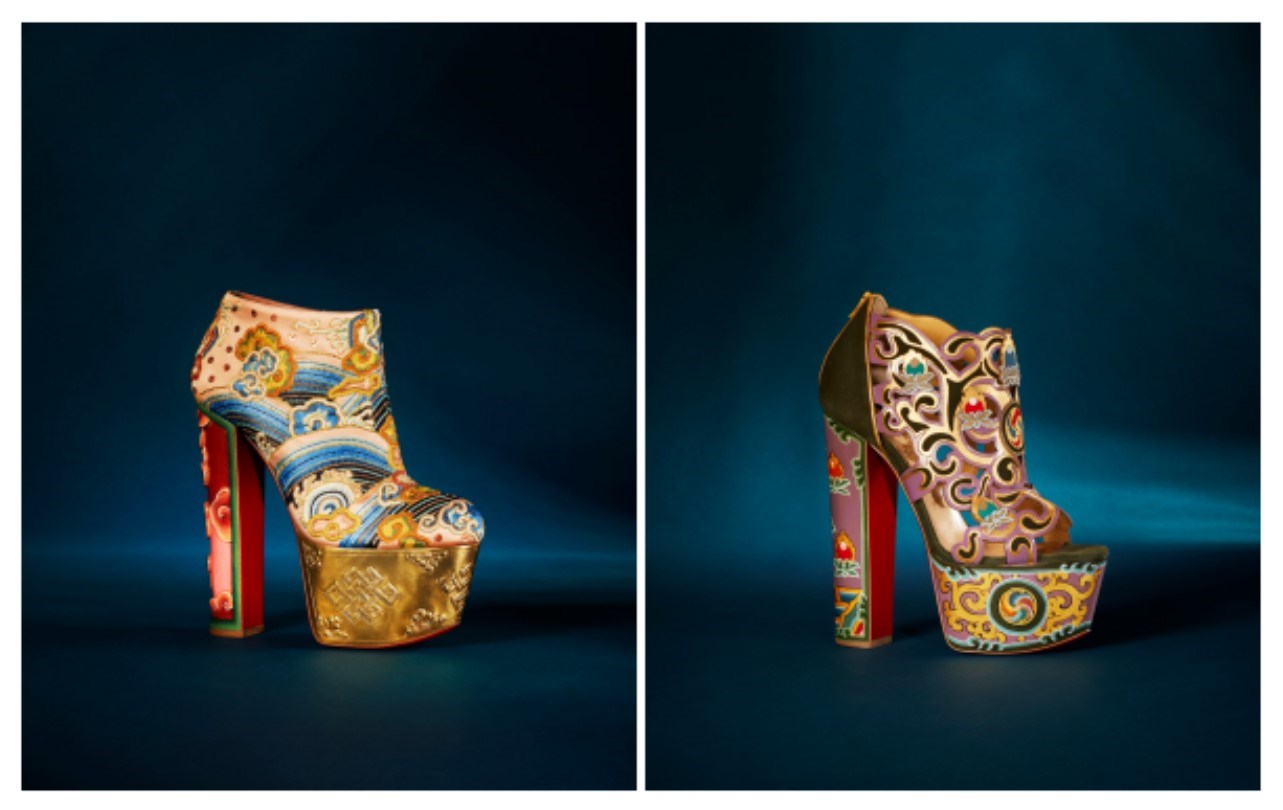
Women's high heels inspired by Bhutanese traditional designs.
Photo: Christian Louboutin
Tourists can also purchase and don a of piece of Bhutanese heritage at the Traditional Boot House in Thimphu.
Origin of tshoglhams
It is believed that tshoglhams were introduced to Bhutan with the arrival of the Zhabdrung or Great Tibetan lamas in 1616.
However, through the passage of time, the making of tshoglhams, categorised as the art of ‘tshemzo’ (appliqué and embroidery) almost vanished in the kingdom.
Revival of tshoglhams
Over the years, most civilians preferred and adapted to wearing more practical and affordable footwear, therefore it did not come as a surprise that the craft of boot making was threatened with extinction.
By the end of the 20th century, mostly royals, ministers and government officials were still wearing these embroidered boots.
Due to the limited demands of tshoglhams, coupled with the laborious process of making them by hand, boot making would have vanished had it not been saved and preserved by one man.
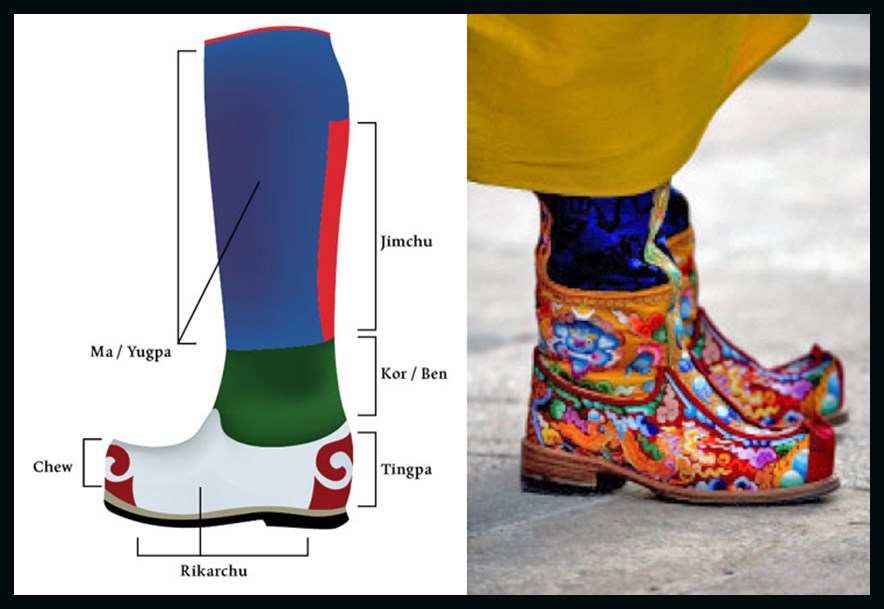
Photo: Spunktitud3
In an attempt to revive the art, Bhutan’s last Prime Minister Tshering Tobgay (who was the director of the former National Technical Training Authority in 2001), sent a teacher and six students from the National Institute for Zorig Chusum to Lopen Tenzin Wangdi in Paro to learn the art of making tshoglhams.
Back then, Lopen Tenzin Wangdi was the last and only person who knew how to make these fascinating boots. He had learnt the craft from Tibet and was responsible for making tshoglhams for the members of the royal family as well as the senior civil servants.
The preservation of the arts of Zorig Chosum are currently taught at two institutes - one in the capital, Thimphu while the other is in Trashiyangtse, eastern Bhutan.
Some young people have been trained in the art of Zorig Chosum, which refers to the thirteen specific arts and crafts of Bhutan, to uphold the unique spirit and heritage of the Land of the Thunder Dragon.
